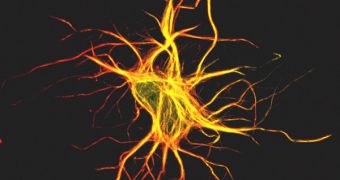Until only recently, experts weren't exactly sure what allowed lantern sharks to turn their glow on and off, and, when asked, they would just say that the animals themselves were in control of the ability. However, a new scientific study seems to demonstrate that the assertion is not entirely true. It may be that three hormones, which were identified in the shark's belly, are responsible for tuning its luminescence. The find is detailed in a new study, published in the November 15 issue of the respected publication Journal of Experimental Biology, Wired reports.
According to the science team that made the finds, this is the first time a hormone is found to be responsible for a phenomenon so complex as bioluminescence. The three hormones – melatonin, prolactin and alpha-MSH – were previously known to play an important role in determining sharkskin coloration, but were not believed to be involved in additional processes. The reason why the new find is so peculiar is the fact that, in all other species known to be capable of luminescence, the glow is controlled by nerve cells, and not by hormones.
This is, therefore, the first alternative pathway to a natural glow ever discovered. Evolutionary biologists believe that this is another conclusive piece of evidence to support the idea that bioluminescence, as an ability, evolved multiple times in animals, until finally reaching a stable configuration for each evolutionary line. In the new study, it also became apparent that the glow was not controlled by nerves when scientists noticed that the ability was triggered slowly, and not on the spot. This hinted at something acting slower than a nerve impulse.
The hormone-based mechanism appears to be mostly a thing of rays and sharks. In the case of a flounder, for instance, it can change colors very quickly and precisely, allowing it to fit in the background. However, the rays take a little longer to adapt to new conditions. “If you take a stingray from a light background and put him against a dark background – it will take him a little longer. He’ll almost get it right,” University of North Florida expert Jim Gelsleichter, who has not been part of the new investigation, says.
“It’s amazing – this work just shows that bioluminescence is a very complex phenomenon. We are still really at the beginning of this story,” Catholic University of Louvain Julien Claes, a coauthor of the new study alongside colleague Jerome Mallefet, adds.

 14 DAY TRIAL //
14 DAY TRIAL //